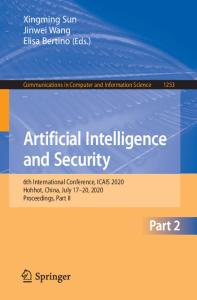Cold sintering: Current status and prospects
- PDF / 1,035,852 Bytes
- 14 Pages / 584.957 x 782.986 pts Page_size
- 27 Downloads / 3,885 Views
Cold sintering: Current status and prospects Jon-Paul Maria, Xiaoyu Kang, Richard D. Floyd, and Elizabeth C. Dickey Department of Materials Science and Engineering, North Carolina State University, Raleigh 27695, North Carolina, USA
Hanzheng Guo, Jing Guo, and Amanda Baker Department of Material Science and Engineering, Materials Research Institute, The Pennsylvania State University, University Park 16802, Pennsylvania, USA
Shuichi Funihashi Department of Material Science and Engineering, Materials Research Institute, The Pennsylvania State University, University Park 16802, Pennsylvania, USA; and Murata Mfg. Co., Ltd., Nagaokakyo-shi, Kyoto, Japan
Clive A. Randalla) Department of Material Science and Engineering, Materials Research Institute, The Pennsylvania State University, University Park 16802, Pennsylvania, USA (Received 16 January 2017; accepted 14 June 2017)
This manuscript describes, defines, and discusses the process of cold sintering, which can consolidate a broad set of inorganic powders between room temperature and 300 °C using a standard uniaxial press and die. This temperature range is well below that needed for appreciable bulk diffusion, indicating immediately the distinction from the well-known and thermally driven analogue, allowing for an unconventional method for densifying these inorganic powders. Sections of this report highlight the general background and history of cold sintering, the current set of known compositions that exhibit compatibility with this process, the basic experimental techniques, the current understanding of physical mechanisms necessary for densification, and finally opportunities and challenges to expand the method more generically to other systems. The newness of this approach and the potential for revolutionary impact on traditional methods of powder-based processing warrants this discussion despite a nascent understanding of the operative mechanisms.
I. INTRODUCTION
Sintering is the process by which a particle compact, referred to commonly as a green body, is transformed to a physically robust and dense polycrystalline monolithic by the application of heat.1–3 The transformation is driven by the energetic return that accompanies curvature reduction, creating grain boundaries, and eliminating solid– vapor interfaces. For a 1 lm particle compact, the driving force for sintering is on the order of 102 J/mol, or about 103 times smaller than the formation energies of typical inorganic solid crystals.1–3 Since the sintering transformation requires bulk diffusion of atoms from the particle interiors to the inter-particle necks, in most cases temperatures between 1/2 and 3/4 of the melting point are needed. These high temperatures are restrictive in the context of material integration, material synthesis, phase
Contributing Editor: Eugene Medvedovski a) Address all correspondence to this author. e-mail: [email protected] DOI: 10.1557/jmr.2017.262
stability, and net shape formation, and contribute substantially to the energy budget for processing. For many years, the material
Data Loading...











